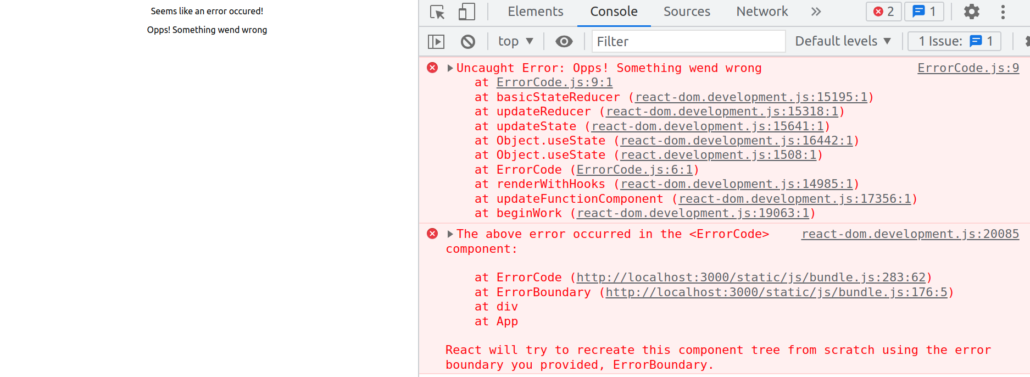How to Increase Performance for the React App (Part-2)
Quick Summary: In this article, we’ll show you how you can increase the stunning performance of React apps. Here, we are going to discuss it with some other new topics. This blog will show you how to use things like react-Santa to help you get better performance in your app. Let’s have a Look!
Introduction
Your React application’s performance can make or break your users’ satisfaction and retention. Slow-loading pages and clunky interfaces can drive users away faster than you can say “bounce rate.”
But fear not because, in this blog, we’re about discussing how to transform your React app into a high-performance powerhouse. We’ll explore tried-and-true techniques, ingenious optimizations, and best practices that will have your app running like a well-oiled machine.
We discussed this in our previous blog, How to Improve and Optimize Performance in React Application Part-1. Consider this blog as part 2.
Choosing the right React.js services is another way to make better apps. But first, let’s read this part 2.
Ways To Improve Performance Of React App
1.React Fragment
React Fragments is a new approach to adding numerous elements to a React Component without wrapping them in extra DOM nodes. It is one of the top React Tools.
Whenever we need to render multiple components on a single page, we wrap those components into a ‘div’ tag. But instead of using the ‘div’ tag we should use React.Fragment as Fragment does not create its corresponding JSX. By using Fragment, DOM does not create extra elements so DOM size reduces and makes the app a tiny bit faster.
import React from 'react'
const ReactFragment = () => {
return (
<>
<div>ReactFragment</div>
<p>Wraped 2 components in a Fragment</p>
</>
)
}
export default ReactFragment
OR
import React, { Fragment } from 'react'
const ReactFragment = () => {
return (
<Fragment>
<div>ReactFragment</div>
<p>Wraped 2 components in a Fragment</p>
</Fragment>
)
}
export default ReactFragment
You can use fragments in 2 ways:
Simply wrap components with React.Fragment
Wrap components with <></>
Both ways are valid and will not create extra tags in DOM. You can understand more with the above example.

If we use div instead of Fragment then div will reflect on DOM. And both ways will give the same result. In the above image, There is no extra tag as we use Fragment in this. But in the image below, there is an extra div tag as we wrap components with div.

2. Lazy Loading
By using Code-splitting methods, we can make React apps faster. React.lazy and React.Suspense is used for code-splitting in react. This feature was introduced to React v16.
React.lazy takes a function that must call a dynamic import(). This must return a Promise which resolves to a module with a default export containing a React component.
The lazy component should then be rendered inside a Suspense component, which allows us to show some fallback content (such as a loading indicator) while we’re waiting for the lazy component to load.
import React, { Suspense } from 'react';
const ReactWithoutFragment = React.lazy(() => import('../UseOfFragment'));
function MyComponent() {
return (
<div>
<Suspense fallback={<div>Loading...</div>}>
<ReactWithoutFragment />
</Suspense>
</div>
);
}
The fallback prop accepts any React elements that you want to render while waiting for the component to load. You can place the Suspense component anywhere above the lazy component. You can even wrap multiple lazy components with a single Suspense component.
In the above example, the ReactWithoutFragment component is imported by React lazy and Wrapped with Suspense, so until the component renders fallback render first it enhances the user experience. You can also use Suspense and lazy loading in the react-router.
3. Error Boundary
You can easily run into a situation where the component rendering results in an error.
In such cases, the component error should not break the entire application. Creating error boundaries ensures that the application does not break in case of an error in the specific component.
Error boundaries are a React component that catches JavaScript errors anywhere in the child component. We can contain the error, log the error messages, and have a fallback mechanism for the UI component failure.
Error boundaries are based on the concept of higher-order components.
Error boundaries involve a higher-order component, containing these methods: static getDerivedStateFromError() and componentDidCatch().
The static function is used to specify the fallback mechanism and derive the new state for the component from the error received.
The componentDidCatch function is used to log error information to the application.
class ErrorBoundary extends Component {
state = {
error: null,
};
static getDerivedStateFromError(error) {
return { error };
}
render() {
const { error } = this.state;
if (error) {
return (
<div>
<p>Something went wrong!!</p>
<p>{error.message}</p>
</div>
);
}
return this.props.children;
}
}
export default ErrorBoundary;
The above code is for the Common Component of the Higher-order component to handle errors.
import React from 'react';
function ErrorCode() {
const [name, setName] = React.useState()
const handleError = () => {
setName(() => {
throw new Error("Opps! Something went wrong");
return "Erron set"
})
}
return (
<>
<h2>{name}</h2>
<button onClick={handleError}>error generate</button>
</>
)
}
export default ErrorCode;
In the above code, we generate the error with the click of a button and assign some error messages. And wrap the above component to the ErrorBoundry component.
<ErrorBoundary>
<ErrorCode />
</ErrorBoundary>
When pressing the button, the ErrorBoundry component renders and give the below result:

ErrorBoundry helps to enhance the user experience without breaking the Application.
4. React Clean Code (Advantage of Object Literals)
Object literals can help make our code more readable. Let’s say you want to show three types of users based on their roles. You can’t use ternary because the number of options is greater than two.
import React from 'react'
import AdminUser from './AdminUser'
import StudentUser from './StudentUser'
import NormalUser from './NormalUser'
function RoleBaseComponent({ user }) {
const { role } = user
switch (role) {
case ADMIN:
return <AdminUser />
case STUDENT:
return <StudentUser />
case USER:
return <NormalUser />
}
}
export default RoleBaseComponent
In the above example, it will take some time as it’s going to check for the condition based on role. And it is time-consuming and increases the line of code which is not expected. In the below code, By advantage of Object Literals, code can be optimized.
import React from 'react'
import AdminUser from './AdminUser'
import StudentUser from './StudentUser'
import NormalUser from './NormalUser'
function RoleBaseComponent({ user }) {
const { role } = user
const components = {
ADMIN: AdminUser,
EMPLOYEE: StudentUser,
STUDENT: NormalUser
};
const Component = components[role];
return <Component />;
}
export default RoleBaseComponent
5. React SEO friendly
SEO (search engine optimization) is a big and complex area. To summarize SEO is about making it easier for Google to find the right content for the user. When a user makes a search Google tries to find which page is the most relevant to that specific search.
We can use React Helmet for performance optimization for react applications. React Helmet gives access to the HTML head tag. We can use meta, title, description, NoScript, etc in the
Helmet.
import React from "react";
import { Helmet } from "react-helmet";
export default function ReactHelmet() {
return (
<div className="App">
<Helmet>
<title>React Helmet</title>
<meta name="description" content="Helmet app" />
</Helmet>
<p>React helmet demo</p>
</div>
);
}
We can wrap HTML head tag components and tags in Helmet. It helps to increase SEO performance. You can find the result in the below image:

We also can achieve SEO-friendly applications by using server-side rendering. We can use frameworks to achieve Server side rendering in React apps. Like
1. Next.js https://nextjs.org/
2. Gatsby.Js https://www.gatsbyjs.com/
FAQ
How to create a basic React app?
- Install Node.js and npm.
- Use the command line to create a React app with Create React App: npx create-react-app my-app.
- Navigate to your app’s folder: cd my-app.
- Start the development server: npm start.
Open your web browser and visit http://localhost:3000 to see your basic React app in action.
How to compile react apps?
React apps are typically compiled automatically during development. To create a production build for deployment, use the command npm run build in your React app’s directory. This command will compile and optimize your code, generating static files in the “build” folder that can be deployed to a web server or hosting platform.
How to build a React app?
To build a React app, follow these steps:
- Set up your development environment with Node.js and npm.
- Create a new React app using a tool like Create React App.
- Develop your app by writing React components and code.
- Use the command npm run build to create a production-ready build of your app.
- Deploy the build files to a web server or hosting service for public access.
How do I reduce React app loading time by 70%?
To reduce a React app’s loading time by 70%, focus on code splitting to load only essential code initially. Optimize assets by compressing images and minimizing file sizes. Implement server-side rendering (SSR) for faster initial rendering. Employ lazy loading for components and data. Use a Content Delivery Network (CDN) for asset distribution.
Is Netflix written in React?
Yes, Netflix uses React for certain parts of its user interface. While the entire Netflix platform is quite complex and utilizes various technologies, React is one of the frontend libraries they employ for creating interactive and dynamic components within their web applications.





